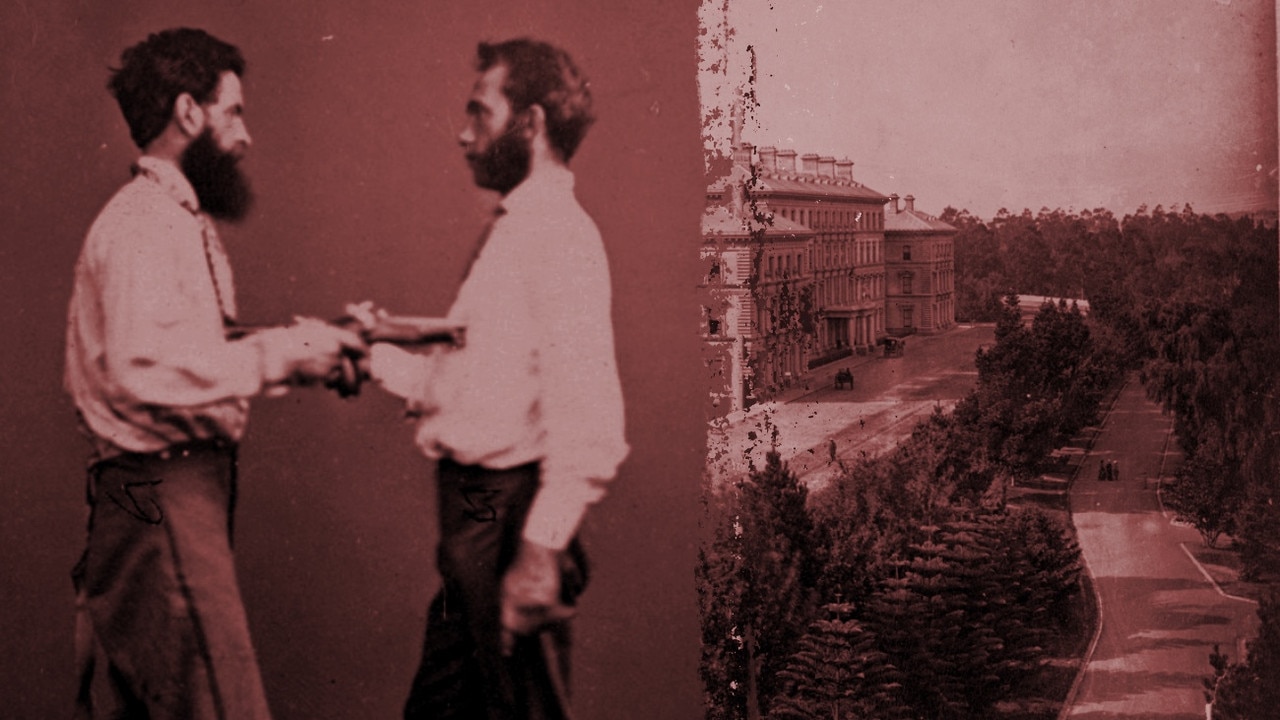Kangaroo brains, parrot pie and roast wombat: the food of Melbourne’s early settlers
PARROT pies were a celebration food, and roast wombat and kangaroo brains were on the menu when rations were low. Welcome to dinner time in 1880s Melbourne.

Melbourne
Don't miss out on the headlines from Melbourne . Followed categories will be added to My News.
KANGAROO, emu, wombat, and an array of native birds and fish all made their way onto Melbourne dinner plates when times were tough in the 1800s.
The rations of the city’s first settlers included bread, oatmeal, cheese, salted meat, dried peas, vinegar, sugar and tea — which were imported to Australia on merchant ships.
This reliance on imports continued right through to the 1880s, but rations were small, and pretty soon settlers began eating native foods through sheer necessity.
EARLY MELBOURNE: PLACES THAT SHAPED OUR CITY
Fish, oysters, lobsters and yabbies became mass favourites — and with some reluctance, people started sampling the native wildlife.
The city of Melbourne’s founders — including John Pasoe Fawkner — traded basic food items like sugar and flour with Aboriginal people in exchange for parrots, kangaroo and woven baskets.
Soon the strange, mythical kangaroo was being turned into kangaroo tail soup.
1800s MAPS OF MELBOURNE SHOW HOW FAR WE’VE COME


Edward Abbott’s The English and Australian Cookery Book (1864) was the first attempt to publish a specifically Australian cuisine.
He collected recipes that combined native and exotic ingredients — alongside British Classics.
The kangaroo steamer is first mentioned in the 1820s and various versions appear in cookbooks until the late 1800s, including Abbotts.
Finely diced fresh kangaroo meat and salt-pork or bacon was packed into a clay pot and ‘steamed’ in its own juices as it boiled on the stove.
The kangaroo steamer was a colonial adaptation of the English jugged hare, and an example of British recipes being reinvented in the new colonies.
Abbott also had a recipe for kangaroo brains that was called Slippery Bob — which was battered brains cooked in Emu fat, or Pan Jam, made with kangaroo tails, roasted in the ashes of a fire and scraped out into a pan to be fried with bacon, mushrooms and pepper.
There is also a recipe for roast wombat which says “this animal feeds on grass and roots, and its flesh is eaten roasted; some persons like its flavour, others, again decry it. It is also cooked in steaks.”

Colonists mostly relied on English cook books, like Mrs Beeton’s The Book of Household Management, which had some Australian recipes added into the 1899 edition — most likely on the assumption that the book would be taken to the colonies (which it was in great numbers).
Parrots and cockatoos were a common bush food for early explorers and settlers, and Mrs Beeton had a recipe for parrot pie.


Mrs Beeton’s parrot pie
Ingredients: 1 dozen parakeets, a few slices of beef (underdone cold beef is best for this purpose), 4 rashers of bacon, 3 hard-boiled eggs, minced parsley and lemon peel, pepper and salt, stock, puff-paste.
Mode: Line a pie-dish with the beef cut into slices, over them place 6 of the parakeets, dredge with flour, fill up the spaces with the egg cut in slices and scatter over the seasoning. Next put in the bacon, cut in small strips, then 6 parakeets and fill up with the beef, seasoning all well. Pour in stock or water to nearly fill the dish, cover with puff-paste and bake for one hour.

Katherine Kirkland, who lived in Trawalla in regional Victoria, revealed her 1841 New Year’s Day dinner menu in a newspaper column that incorporated indigenous food into traditional British fare.
“We had kangaroo-soup, roasted wild turkey well stuffed, a boiled leg of mutton, a parrot-pie, potatoes, and green peas; next, a plum pudding and strawberry-tart, with plenty of cream.”
She was a fan of the parrot pie and commented that the “white parrots are the best; next, the white cockatoo”.


There were also large numbers of Irish people coming to Australia in the 1800s, who brought their recipes for Irish stew. It’s said that kangaroo and wallaby were often used in the stew instead of lamb when times were tough. Wallaby stew is immortalised in an Australian bush song with lyrics that said “stir the wallaby stew and make soup with a kangaroo tail”.
Pumpkins flourished in the early years of settlement when people were struggling to grow wheat and other introduced crops. The first pumpkin seeds were taken on the first fleet to feed pigs, but the seeds were grown and soon there were pumpkins galore. It was cooked into pie, fritters, soups, pancakes and scones.

The game bird du jour was the native wonga wonga pigeon. It was a revered game meat on colonial menus from at least the 1840s. Often served with a traditional English-style bread sauce, the bird’s plump, white-fleshed breast was similar to pheasant when roasted and there are accounts that say it was an incredibly delicious meat.


